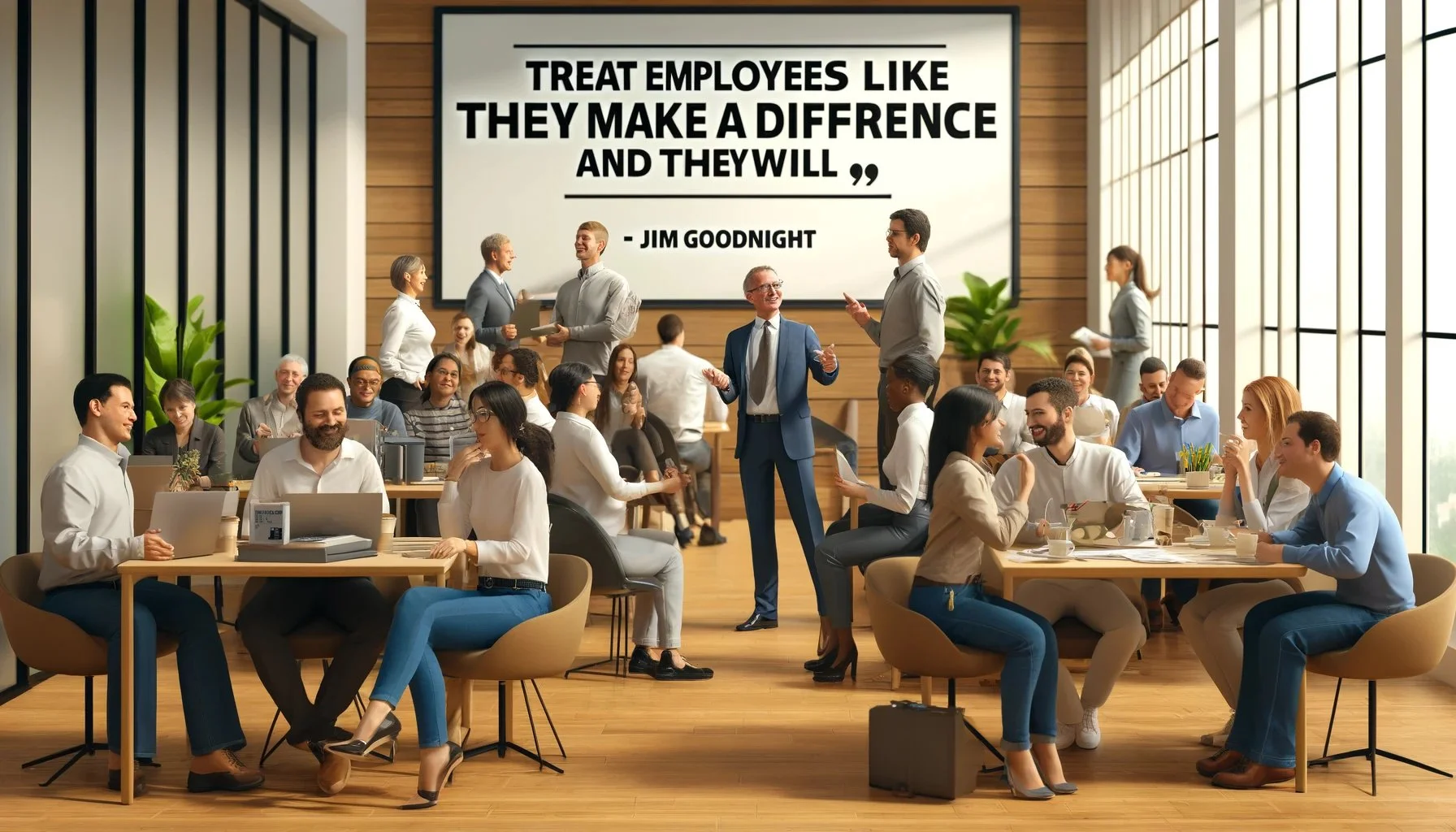Employee engagement is a crucial component and the backbone of a successful organization. Engaged employees are more motivated, productive, and committed to their work, which leads to higher performance and lower turnover rates.
Quiet Hiring: Build a Resilient Organization and Engage Employees
Transform Your Team: 5 Project Management Tactics for Success
From Resumes to Robots: How AI is Reshaping the Job Market.
Who’s Got the Monkey? Mastering Delegation for High-Performance Teams
Overcoming Imposter Syndrome: A Strategic Blueprint for Professional Success.
Navigating New Horizons: Transitioning Successfully After Decades with One Company.
You're One Step From The C-Suite: How To Make The Jump.
The Confidence Kickstart: The Swift Path to Feeling Unstoppable
The FADE Cycle
When Your Boss Is A Jerk.
How To Get Noticed (and Promoted) at Work.
Standing out and moving up the ladder requires more than just showing up and doing your job. It's about making an indelible mark, demonstrating your unique value, and strategically positioning yourself for promotions. Here's a comprehensive guide to getting noticed—and promoted—at work, complete with action steps and book recommendations to propel your career forward.
Can You Really Change? A Deep Dive into Personal Transformation.
In a constantly moving world, the idea of change is both comforting and challenging. We often hear about the importance of change: changing habits, attitudes, and lives. But beneath the surface of these conversations lies a more profound question that touches the core of our being: Can people really change?
The Transformation Playbook: Mastering the Message That Moves Organizations Forward
Turn Your Dreams into Reality.
Why Top Leaders Will Never Be Replaced by AI
How to Develop a Better Work/Life Balance: A High-Performance Coach's Perspective
As a high-performance coach specializing in helping executives and business owners reach their fullest potential, I've often observed that the issue of work/life balance is a recurring challenge.
My clients frequently grapple with the tension between career advancement and personal well-being. The juggling act is challenging; however, there are actionable strategies you can employ to harmonize your work and life spheres effectively.
Below are four action items that I've found invaluable in my coaching practice:
Action 1: Time Block Your Day
In my experience, time management is at the crux of a balanced life. As we often discuss in our coaching sessions, your calendar should be your best friend. I recommend implementing time-blocking techniques to designate specific hours of the day for work tasks and personal activities.
How to Implement: Digital calendars or planner apps are excellent tools. Your workday should be a mosaic of time blocks, including work tasks, meetings, and, crucially—periods for self-care and family. Doing this prevents work from encroaching upon personal time, improving balance and reducing stress.
Action 2: Establish Unambiguous Boundaries
The next step in attaining work/life balance is setting clear boundaries. Many of my clients have initially struggled with this, but the benefits are enormous once you practice it. Be explicit about your 'office hours' and adhere to them.
How to Implement: Use out-of-office auto-responders during your off-hours. This signals your colleagues and clients that you're unavailable outside those times. Likewise, openly communicate your schedule to your family so they are on the same page about your availability.
Action 3: Prioritize Self-Care
Self-care is an aspect that professionals often overlook, resulting in burnout and reduced productivity. In our coaching sessions, I emphasize that self-care is not an indulgence but an essential part of your performance strategy.
How to Implement: Prioritize exercise, sleep, and activities that rejuvenate you. Mark these as non-negotiables in your calendar, treating them with the same respect you would a work meeting.
Action 4: Limit Technological Interruptions
Smartphones are double-edged swords. While they connect us to a world of information, they are also significant sources of distraction and stress. I suggest designated 'tech-free' times during your personal hours.
How to Implement: Turn off work email and messaging app notifications during your personal time. This uninterrupted time helps you recharge and allows for quality interactions with your loved ones.
Case Study: Achieving Work/Life Balance in the Executive Suite
Meet Sarah, a C-level executive in a tech firm, who reached out to me with concerns about her plummeting work/life balance. Working 70-hour weeks, she was stressed, fatigued, and disconnected from her family. Here's how she leveraged the above-mentioned action to transform her life.
Time Blocking and Boundaries
In our first session, Sarah and I immediately implemented time-blocking techniques. Sarah assigned explicit 'office hours' and informed her team and family about them. Using out-of-office auto-responders, she managed to decrease after-hours work communication substantially.
Prioritizing Self-Care
Sarah's schedule had no room for self-care initially. She incorporated well-being into her life by blocking time for gym workouts and family dinners. Over a few weeks, she reported feeling more energized and focused.
Limiting Tech Interruptions
Sarah used to keep her work emails and messaging apps active round-the-clock. After our discussion, she turned off notifications during personal hours. This simple act brought immense peace and allowed her to engage more deeply with her family.
Outcome
Within two months, Sarah's stress levels significantly decreased, and her team reported better interaction and leadership from her end. Not only did her work performance improve, but her personal life also flourished, rekindling relationships that had been strained due to her previous work schedule.
Through the application of these action items, Sarah epitomizes the transformative power of a balanced work/life approach. It's not just about working smarter but also living better. By following these strategies, you can also realize the work/life balance that seems elusive yet is crucial for lasting success and happiness.













